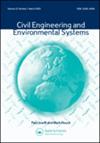Risk perceptions and economic incentives for mitigating windstorm damage to housing
IF 1.7
3区 工程技术
Q3 ENGINEERING, CIVIL
引用次数: 7
Abstract
ABSTRACT Mitigation measures such as window shutters can substantially reduce windstorm damage to housing. However, the cost-effectiveness of wind mitigation measures remains unclear when considering influencing factors such as financial protection via insurance, individual risk perceptions and planning time horizons. Economic incentives may also be provided to motivate homeowners to invest in mitigation. In this study, the installation of cyclone-rated window shutters as a mitigation measure for homeowners in Australia is used as a case study. A life-cycle cost analysis in conjunction with a rank-dependent expected utility model are employed to identify economic incentives that are financially attractive to homeowners with different perceived risks and planning time horizons. The effect of home insurance is also taken into account. The results suggest that, as expected, the economic incentives needed to promote window shutters among homeowners decrease with the perceived storm damage risk and planning time horizon. A rebate for shutter installation cost or a discounted insurance premium have been found to be feasible economic incentives considering a typical planning time horizon of ten years. Statistical surveys are needed in future work to calibrate the parameters within the rank-dependent utility model to better represent the risk perceptions of different groups of homeowners.减轻风暴对住房破坏的风险认知和经济激励
百叶窗等缓解措施可以大大减少风暴对房屋的破坏。然而,在考虑诸如通过保险提供的财务保护、个人风险认知和规划时间范围等影响因素时,减灾措施的成本效益仍然不清楚。还可以提供经济奖励,以激励房主投资缓解。在本研究中,安装旋风额定百叶窗作为澳大利亚房主的缓解措施被用作案例研究。生命周期成本分析与等级依赖的预期实用新型相结合,用于确定对具有不同感知风险和规划时间范围的房主具有财务吸引力的经济激励措施。家庭保险的影响也被考虑在内。结果表明,正如预期的那样,在房主中推广百叶窗所需的经济激励随着风暴破坏风险的感知和规划时间的范围而减少。考虑到典型的十年规划时间范围,百叶窗安装费用回扣或保险费折扣被认为是可行的经济激励措施。在未来的工作中,需要进行统计调查来校准等级依赖实用新型内的参数,以更好地代表不同房主群体的风险感知。
本文章由计算机程序翻译,如有差异,请以英文原文为准。
求助全文
约1分钟内获得全文
求助全文
来源期刊

Civil Engineering and Environmental Systems
工程技术-工程:土木
CiteScore
3.30
自引率
16.70%
发文量
10
审稿时长
>12 weeks
期刊介绍:
Civil Engineering and Environmental Systems is devoted to the advancement of systems thinking and systems techniques throughout systems engineering, environmental engineering decision-making, and engineering management. We do this by publishing the practical applications and developments of "hard" and "soft" systems techniques and thinking.
Submissions that allow for better analysis of civil engineering and environmental systems might look at:
-Civil Engineering optimization
-Risk assessment in engineering
-Civil engineering decision analysis
-System identification in engineering
-Civil engineering numerical simulation
-Uncertainty modelling in engineering
-Qualitative modelling of complex engineering systems
 求助内容:
求助内容: 应助结果提醒方式:
应助结果提醒方式:


